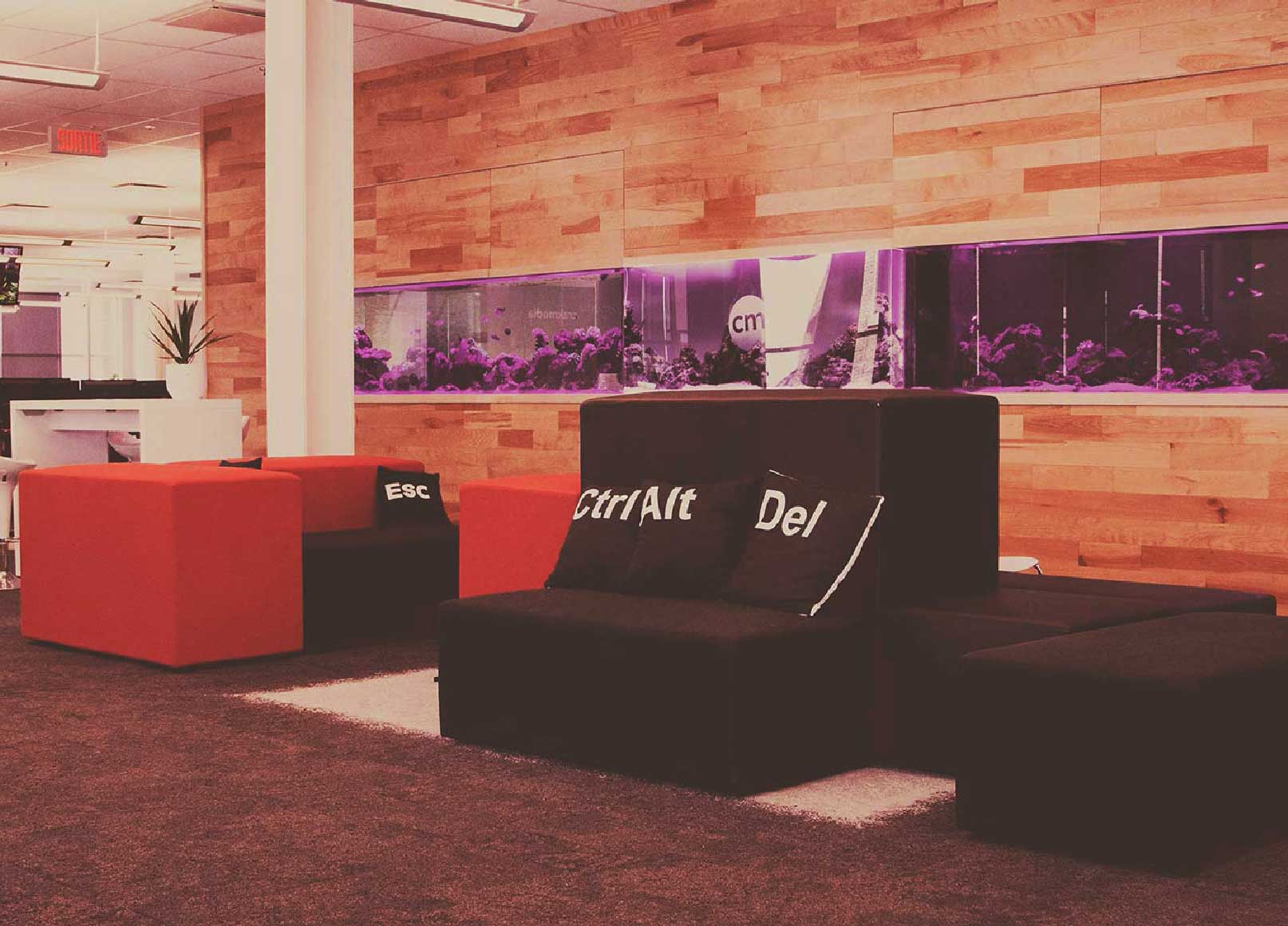What are employees truly seeking in 2022?
With working from home and hybrid schedules becoming the new standard worldwide, recruitment demands increasing to new highs, and the hiring process transforming regularly, it seems more complex than ever for organizations to identify what employees are really looking for in 2022.
Here are 5 things we consider staples for any new or existing team member in the current job climate.
1. Flexibility
This increasingly famous F word we’re seeing everywhere seems to be the term of the hour across many industries and career sectors. Flexible schedule, flexible conditions, flexible work situation… And yet, while teleworking and adaptable work schedules grow more popularized and normalized, “flexible” can quickly lose its meaning and impact.
Flexibility actually is a sought-after feature by employees right now, but precision is crucial when including the word “flexible” in a job offer or within the recruitment process. Otherwise, its use can quickly transform into nothing more than a simple marketing strategy.
Because yes, offering the choice between working from home, the office, or both may have been considered innovative in terms of flexibility in 2020 and 2021, but this year, it’s pretty much the general norm.
Emphasizing flexibility within other workplace areas is the best way to breathe back some meaning into this once evocative word. Whether it’s material supplies, company advantages, or a certain position’s tasks and responsibilities, originality is now crucial when thinking of flexibility.
And if it’s a bit of a challenge to identify an area where this easily overused term could apply, it’s best to avoid it altogether! A position adequately highlighted and advertised will be just as attractive to a potential employee with or without the second most famous F word.
2. Growth opportunities
Now more than ever, growth opportunities are crucial for an employee’s well-being within a company. Nurturing a passion for one’s career is nearly an essential need for everyone’s day-to-day routine. An emphasis on happiness and satisfaction at work is a must for many when considering the selection criteria for a job offer.
Therefore, opportunities to evolve and grow within an organization are more important than ever, especially as available job positions seem to be swarming from all directions. Diversity is at the forefront of the current job market, and it seems easier than ever to find a more gratifying and motivating career elsewhere. Paying attention to your employees’ needs and ambitions is, therefore, a necessity when thinking of work satisfaction.
It can be hard to stay motivated and loyal to your employer when the next step in your career seems out of reach. Open communication is vital to ensure that each team member has realistic, fulfilled expectations, at least within a somewhat near future!
In 2022, sweet talk isn’t accepted as the bare minimum anymore. We all know actions mean more than words! Employees want to know they’re equipped with the necessary tools and information to further their careers.
3. Coherence and transparency
With a wave of job offers surging from all directions, employees and candidates alike have a sharper eye than ever when looking for their next career move. Coherence and transparency are therefore critical in each step of the hiring process, starting right at the beginning when writing and publishing a newly open position.
Flashy yet meaningless job titles, for example, should now be avoided. It’s more important to accurately represent a position and set realistic expectations than to draw in a higher number of candidates looking for a job that doesn’t fit the tasks and projects you’re looking to assign to a new resource.
A quality posting will have a more positive, long-term impact on the relationship between talent and recruiter than a marketing strategy that creates temporary buzz around a position without real substance.
In the end, both the employer and employee come out happier and more satisfied.
Vague details on a company or position’s advantages also have minimal added value in 2022. This year, a “competitive salary” doesn’t mean much, mainly because most employers now use this phrasing in their job descriptions.
Transparency and honesty make all the difference from the very first point of contact with a candidate or potential employee. The clearer one’s expectations are, the higher the chances are of retaining a resource in the long term!
4. An open ear
Feeling truly listened to can make a world of difference for an employee within an organization. Asking a few questions during a yearly evaluation or an exit interview is far from sufficient to truly take a team’s pulse.
Carrying out surveys regularly within a team, on the other hand, can be an excellent strategy to isolate elements that require improvement within a company. Offering an anonymous platform to employees to allow them to express their concerns or suggestions freely makes all the difference in a team’s well-being.
Seriously taking those comments and this data into consideration and actually applying functional changes is the most critical step. Actions are worth more than words, and setting concrete changes in motion is key to a fulfilled, happy team.
And if a specific change isn’t possible in the short term, open communication with employees can still have a positive impact! In the end, feeling listened to is the attention that makes the biggest difference, even if you aren’t able to fulfill all of your team members’ needs. Studying and monitoring employee well-being is essential for ensuring a quality work experience within an organization. Human resources bear their name well, and it shouldn’t be forgotten!
5. Hiring beyond the CV
The concept of skill-based hiring is a rapidly-growing idea in 2022.
While recruiting was primarily based on specific formal training or a certain amount of work experience in the past few years, we’re currently observing a shift toward a hiring process that focuses on real, more general candidate skills rather than a few lines on a piece of paper.
For example, within certain organizations, numerous IT job opportunities don’t even require a diploma anymore. In 2021, companies such as Accenture and IBM advertised hiring requirements that didn’t include a diploma in 43% and 29% of their job offers, respectively.
It seems the emphasis is shifting to hiring requirements focused on technical skills rather than a specific certification. For mid-level positions especially, acquired skills from past jobs are worth their weight in gold in a new role.
Skills such as time management and creativity, for example, could hold as much value in the eye of a recruiter as mathematical skills or Excel knowledge. The principle rests on the idea that training an employee in these technical skills (or hard skills) is easier and more profitable than developing general (or soft) skills.
In 2022, reconfiguring one’s approach toward the hiring process and team management could be the key to adapting to a constantly evolving process, therefore fulfilling increasingly precise expectations from potential candidates and existing employees.
After all, talents within an organization want to feel appreciated for the unique skills and knowledge they bring to their team. While a colleague might hold the same diploma as them, their ideas and creative eye can’t be replicated by anyone else.
There is obviously an infinite list of things employees are looking for in 2022, but these 5 items mentioned above have made the strongest impression on us since the beginning of the year. What do you think 2023 holds for recruitment and employee retention?
Share






